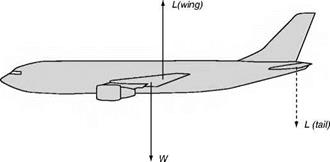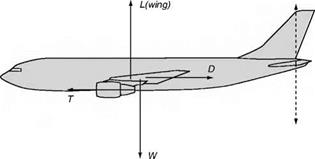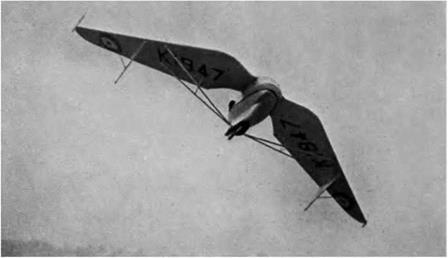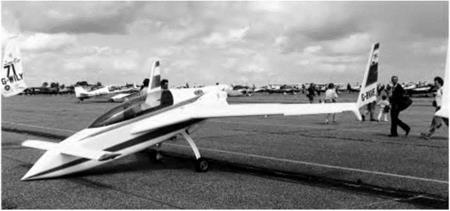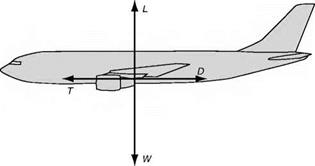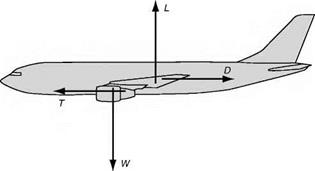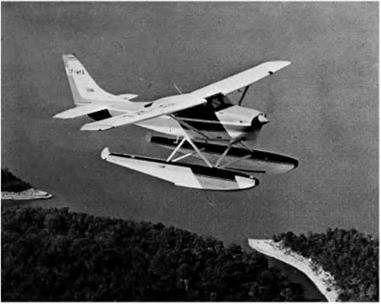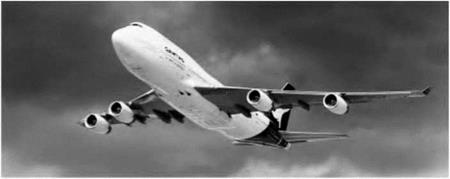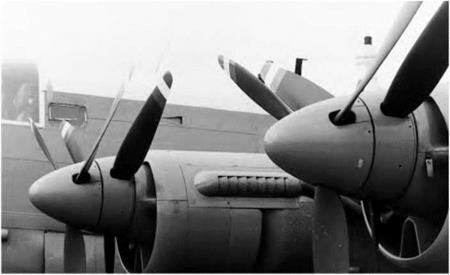Introduction
The flight of an aeroplane may be considered as consisting of various stages. First, the take-off, during which the aircraft is transferred from one medium to another; then the climb, during which the pilot gains the height at which the level part of the flight will be made; then a period of this steady flight at a constant height, interrupted in certain cases by periods of manoeuvres, or aerobatics; the approach back towards the earth; and finally the landing.
On long distance flights the main portion may consist of a long slow steady climb, which is more economical than maintaining the same height as fuel is consumed, and the weight of the aircraft is reduced, and so it is often only during a small portion of each flight that the aeroplane may be considered as travelling in straight and level flight at uniform velocity (Fig. 5A, overleaf).
There is often a tendency for an aeroplane to swing to one side during the take-off run. This must be due to some asymmetric feature of the aircraft, and it is an interesting problem to try to track down the real villain that is causing the swing.
The pilot should be the first suspect. He himself is not symmetrical, he may be right-handed (or left-handed), he probably looks out on one side of the aeroplane and may even sit on one side. Certain it is that some aircraft which have swung violently when the pilot has tried to keep them straight have gone as straight as a die when left to themselves!
The second and main suspect is undoubtedly the propeller. But which of its asymmetric effects is the chief cause of swing in any particular aircraft is not so easy to determine. If the propeller rotates clockwise, the torque reaction will be anti-clockwise, the left-hand wheel will be pressed on the ground and the extra friction should tend to yaw the aircraft to the left. But let us not forget that the torque reaction may be compensated and, in that case, the behaviour of the aeroplane will depend on how it is compensated.
The slipstream – assuming the same clockwise propeller – will itself rotate clockwise and will probably strike the fin and rudder on the left-hand side, again tending to yaw the aircraft to the left. But the slipstream too may be compensated.
The gyroscopic effect will only come in when the tail is being raised. Again the tendency will be to swing to the left if the propeller rotates clockwise. Try it with the bicycle wheel.
Apart from the compensating devices already mentioned the tendency to swing can be largely, if not entirely, eliminated by opposite rotating propellers on multi-engined aircraft (Fig. 4K), by contra-rotating propellers on single- engined aircraft and by jet propulsion or rocket propulsion instead of propellers.
Contra-rotating propellers not only give the greater blade area, or solidity, that is required to absorb large power, but they eliminate or very nearly eliminate all the asymmetrical effects of slipstream, propeller torque, and gyroscopic action. It is curious that the average pilot hardly realised the existence of these asymmetrical effects – until he lost them. Pilots who flew behind contrarotating propellers for the first time reported that the aircraft was easy to handle and nice to fly. This is hardly surprising; what perhaps is surprising is that the previous ill-effects of one-way rotation had been so little noticed. The second propeller straightens the slipstream created by the first and so causes a straight high-speed flow of air over wings and tail; this improves the control and there is little or no resultant torque tending to roll the aircraft in one direction, and therefore no need to counteract such tendency; the gyroscopic effects are also neutralised. All this means that there should be no tendency to swing to one side during take-off, no roll or yaw if the throttle is suddenly opened or closed, no difference in aileron or rudder trim, whether the engine is on or off – in short, the aircraft should be easy to handle and nice to fly.
Can you answer these?
Some simple questions about thrust and propellers –
1. What is a ramjet?
2. What is meant by the blade angle of a propeller, and why does this angle decrease from boss to tip?
3. Distinguish between the ‘advance per revolution’, the ‘geometric pitch’ and the ‘experimental pitch’ of a propeller.
4. What is slip?
5. What are the advantages of a variable-pitch propeller?
6. Why is the tip speed an important factor in propeller design?
7. Why is solidity important, and how can it be increased?
8. What methods of propulsion can be used outside the earth’s atmosphere?
For solutions see Appendix 5.
Turn to Appendix 3 for a few simple numerical examples on thrust.
 Riggers’ angle of incidence 4° Angle of attack 4°
Riggers’ angle of incidence 4° Angle of attack 4°










